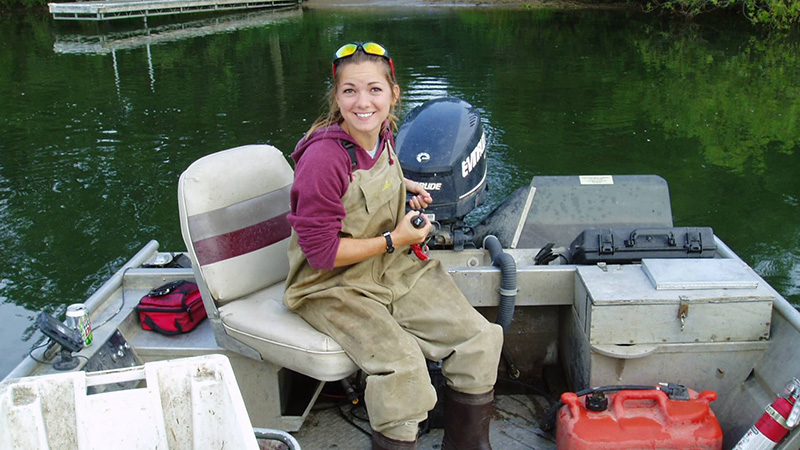
By Ronica Stromberg
Inarguably, the deep-sea fish that Rene Martin teaches about outshine Midwestern fish. They glow in the dark.
Called “bioluminescent” in marine biology, these fish flicker through the inky waters of the ocean like candle flames. Schools of them move like slow-motion fireworks.
Martin will give University of Nebraska-Lincoln students the chance to see specimens of such deep-sea fish up close in her “Vertebrate Zoology” class through the School of Natural Resources.
A new hire and in her first professorship, the Minnesota native came from the American Museum of Natural History in New York where she worked as a postdoctoral researcher studying deep-sea and near-shore fish. After completing a year and a half there, she received specimens as a departing gift from the museum.
“Having those specimens to show students, I'm really excited to blow their mind,” she said.
Students may have seen a cartoon version of one bioluminescent fish, the anglerfish, in “Finding Nemo.” Anglerfish have a light dangling over their head like a lure. When smaller fish near the glowing light, the anglerfish eats them.
Martin said such predation is only one reason deep-sea fish have glowing parts. Other fish communicate with their light organs by flashing different patterns. Many deep-sea fish cannot see red, so some fish with red light organs under their eyes flash them to view others without being seen.
One of the main reasons Martin gave for bioluminescence, though, is camouflage. She explained that fish with glowing bellies may swim at a shallower depth than their predators and a glowing belly helps them blend in with sunlight streaming down into the water. If their bellies didn’t glow, their dark body would be silhouetted by sunlight.
At the New York museum, Martin mainly worked on bioluminescent specimens collected over the past 100 years. She would dissect their light organs and section them to study their cell structure.
This research continued the studies she did on deep-sea fish, evolution and morphology (the study of the form of living organisms and the relationships between their structures) at the University of Kansas as a doctoral student and St. Cloud State University as a master’s student.
Read more about Rene and see additional pictures at https://snr.unl.edu/aboutus/what/newstory.aspx?fid=1167